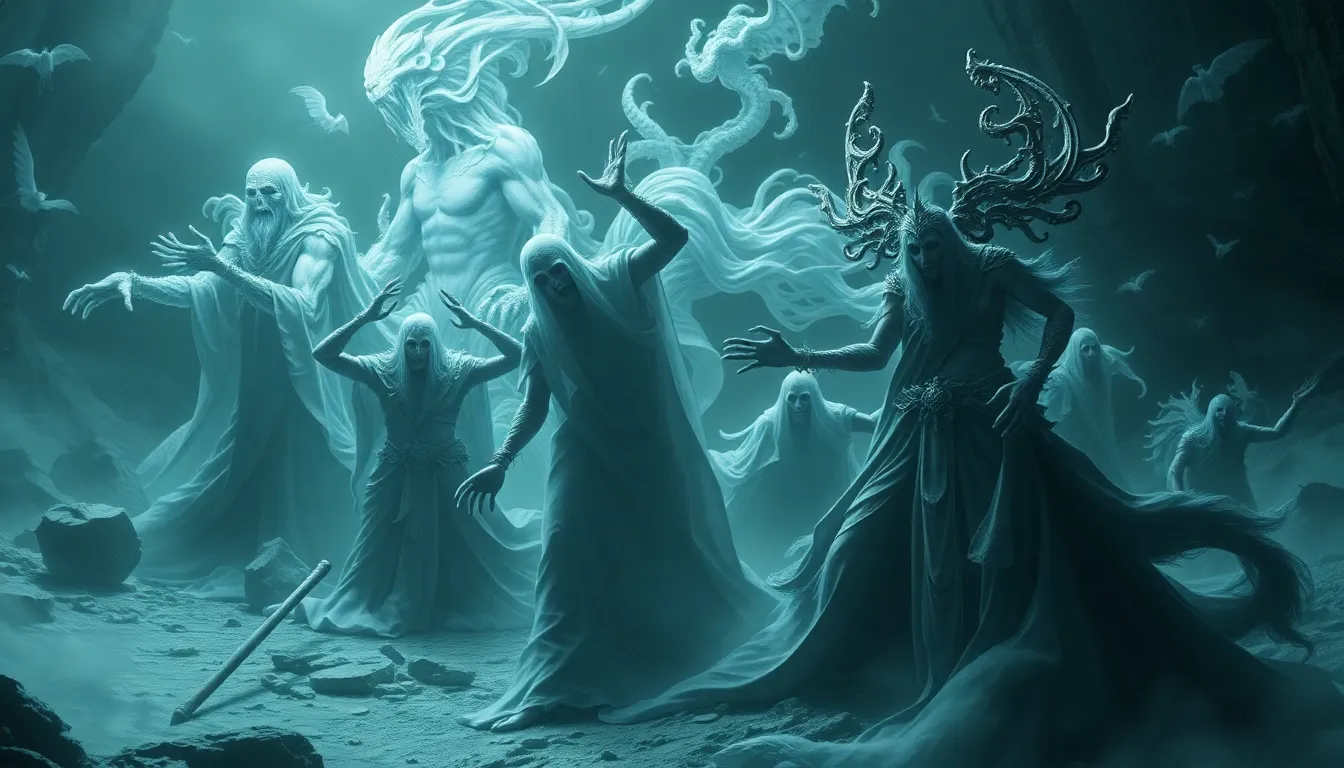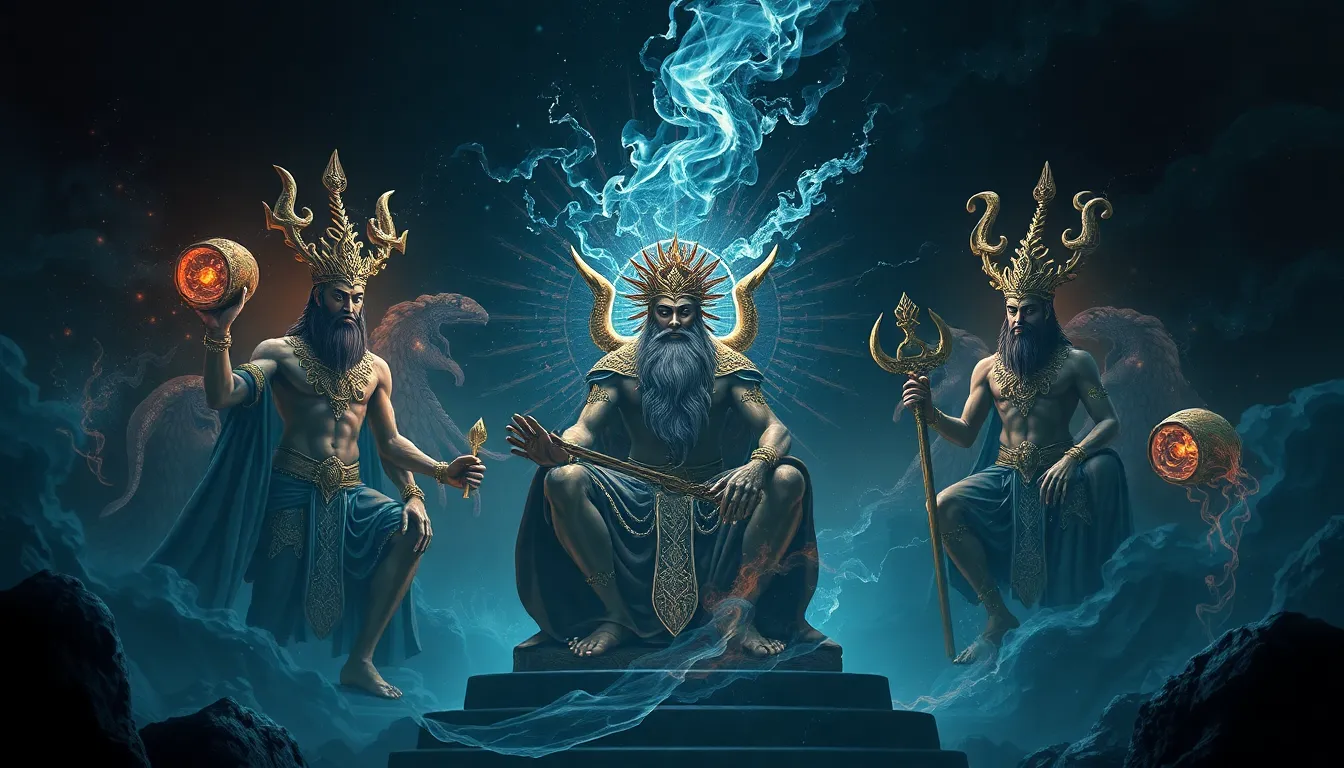Ghosts and Deities: The Mythical Denizens of the Underworld
I. Introduction to the Underworld
The concept of the Underworld is deeply rooted in the fabric of human culture and mythology. It serves as a domain where souls reside after death, often viewed with both fear and reverence. Across various cultures, the Underworld is not merely a place of darkness; it embodies complex beliefs about life, death, and the afterlife.
Ghosts and deities are central figures in these narratives, representing the connection between the living and the dead. Ghosts often reflect the unresolved issues of the deceased, while deities symbolize the powers that govern the afterlife. This article explores the historical perspectives, cultural variations, and psychological interpretations of these mythical denizens of the Underworld.
II. Historical Perspectives on the Underworld
A. Ancient civilizations and their beliefs about the Underworld
Throughout history, various civilizations have formed unique beliefs regarding the Underworld, each reflecting their cultural values and understandings of life and death.
1. Mesopotamian views
In ancient Mesopotamia, the Underworld, known as Kur or Irkalla, was viewed as a dreary, shadowy place where all souls went after death. The dead were believed to be judged by the gods, with their fates determined by their earthly deeds. The Sumerians, Akkadians, and Babylonians all contributed to this complex tapestry of beliefs.
2. Egyptian beliefs and the afterlife
Egyptian mythology presents a more elaborate view of the Afterlife. The Underworld, or Duat, is depicted as a realm filled with challenges that souls must overcome. The weighing of the heart ceremony, overseen by Osiris, determines the soul’s fate, contrasting the purity of the heart against the feather of Ma’at, the goddess of truth and justice.
B. The Underworld in Greco-Roman mythology
In Greco-Roman traditions, the Underworld is personified by Hades, the god of the dead. This mythology outlines a structured realm with distinct areas for souls based on their life choices.
1. Hades and the realm of the dead
Hades, often depicted as a dark and foreboding place, is home to various mythological figures and locations, including the Elysian Fields for the virtuous and Tartarus for the wicked.
2. The significance of the River Styx
The River Styx serves as a boundary between the living and the dead, with Charon, the ferryman, transporting souls across. This river symbolizes the transition between life and afterlife, emphasizing the importance of proper burial rites.
III. Ghosts in Folklore and Mythology
A. Definition and characteristics of ghosts
Ghosts are often defined as the spirits of the deceased who linger in the earthly realm. They are typically characterized by their inability to move on, which may stem from unfinished business, unfulfilled desires, or strong emotional ties to the living.
B. Cultural variations of ghosts
Different cultures depict ghosts in various forms, reflecting their unique beliefs about death and the afterlife.
1. Western ghosts and their roles
In Western folklore, ghosts are often seen as vengeful spirits or tragic figures seeking closure. They frequently appear in stories, warning the living or seeking justice for unresolved issues.
2. Eastern spirits and their significance
Conversely, in many Eastern cultures, spirits are revered and respected. Ancestor worship is common, with the belief that the spirits of ancestors guide and protect their living descendants.
IV. Deities of the Underworld
A. Overview of key deities associated with the Underworld
Numerous deities govern the Underworld across different cultures, each embodying unique aspects of death and the afterlife.
- Hades (Greek): The ruler of the Underworld, overseeing the souls of the dead.
- Osiris (Egyptian): A god of resurrection and the afterlife, responsible for judging souls.
- Yama (Hindu): The god of death who guides souls to their next life.
B. Roles and responsibilities of these deities
These deities play crucial roles in the cycle of life and death. They are often seen as judges, guides, and protectors of the souls that traverse the Underworld.
C. Interactions with humans and the living world
Many myths depict these deities interacting with the living, either through dreams, omens, or direct encounters. Such interactions emphasize the belief that the Underworld is not entirely separate from the earthly realm.
V. The Journey to the Underworld
A. Mythical narratives of the afterlife journey
Mythologies often include narratives detailing the journey to the Underworld, highlighting the trials and tribulations souls must face after death.
B. Rituals and practices to navigate the Underworld
Various cultures have developed rituals to aid the deceased in their journey. These may include:
- Funeral rites to prepare the body and soul.
- Offerings to deities or spirits to ensure safe passage.
- Prayers and incantations to guide the soul through challenges.
C. Symbolism of death and rebirth
The journey to the Underworld often symbolizes a cycle of death and rebirth, reflecting the belief that death is not an end but a transition to another existence.
VI. Ghosts and Deities in Popular Culture
A. Representation in literature and film
Ghosts and deities have permeated popular culture, appearing in numerous forms of literature, film, and art. They are often portrayed as either benevolent guides or malevolent forces.
B. Influence on modern storytelling and media
The portrayal of ghosts and deities continues to shape modern narratives, influencing genres such as horror, fantasy, and mythology-inspired storytelling.
C. The evolution of ghost and deity portrayals
Over time, the representation of these figures has evolved, often reflecting contemporary societal fears and aspirations regarding death and the afterlife.
VII. Comparative Analysis of Underworld Beliefs
A. Similarities and differences among various cultures
While many cultures share common themes regarding the Underworld, significant differences exist in how these beliefs are structured and understood.
B. The role of morality and judgment in the Underworld
Morality plays a crucial role in many Underworld narratives, with the actions of the living often determining the fate of the dead.
C. The impact of geography and environment on beliefs
Geographic factors, such as climate and landscape, have influenced how different cultures conceptualize the Underworld, leading to diverse mythologies and practices.
VIII. Psychological Interpretations of Ghosts and Deities
A. Ghosts as manifestations of fear and loss
From a psychological perspective, ghosts may represent the fears and unresolved feelings surrounding death and loss, serving as a way for the living to cope with grief.
B. Deities as symbols of hope and guidance
Deities associated with the Underworld can be seen as symbols of hope, embodying the belief that there is guidance available even in the darkest times.
C. The role of mythology in coping with mortality
Mythologies surrounding ghosts and deities offer narrative frameworks that help individuals and societies make sense of mortality and the unknown aspects of death.
IX. Contemporary Beliefs and Practices
A. How modern societies view ghosts and the Underworld
In contemporary society, beliefs in ghosts and the Underworld vary widely, with some viewing them as mere folklore while others maintain spiritual connections to these concepts.
B. Revival of ancient rituals and beliefs in contemporary spirituality
Many modern spiritual practices have revived ancient rituals, reflecting a growing interest in connecting with the past and understanding the afterlife.
C. The future of Underworld beliefs in a globalized world
As cultures continue to



